Examples chmod 644 filehtm Set the permissions of filehtm to "owner can read and write;Group can read only;The command chmod changes the file mode bits of each given file according to mode, which can be either a symbolic representation of changes to make, or an octal number representing the bit pattern for the new mode bits chmod never changes the permissions of symbolic links;

A Complete Guide On Wordpress Filesystem Permissions And Ownerships Codediesel
Chmod permissions chart
Chmod permissions chart-Or, to add read and write permissions for the group that owns the file, you would run $ chmodChmod Calculator is a free utility to calculate the numeric (octal) or symbolic value for a set of file or folder permissions in Linux servers Check the desired boxes or directly enter a valid numeric value (eg 777) or symbolic notation (eg rwxrwxrwx) to see its value in other formats



The University Of Akron College Of Applied Science Technology Dept Ppt Download
Chmod 755 Only owner can write, read and execute for everyone This next command will set the following permission on file rwxrxrx Only the owner will be allowed to write to the file Owner, group members and everyone else will have read and execute permission chmod 755 /path/to/file chmod 700 Everything for owner onlyThe exact command is chmod ax filename The syntax is as follows the letter or letters representing the owner (u), group (g), other (o) or all (a) followed by a for adding permissions or a – for taking away permissions and then the letter for the permission (r for read, w for write and x for execute)In the above example, I added the execute permission for all usersChmod permissions filename There are 2 ways to use the command Absolute mode;
Absolute(Numeric) Mode In this mode, file permissions are not represented as characters but a threedigit octal number The table below gives numbers for all for permissions typesThe fourth number specifies permissions for everybody else;Use the command cat footxt to verify that you, the file owner, can read the file again Here are some common examples of settings that can be used with chmod gw — adds write access for the group orwx — removes all permissions for others ux — allows the file owner to execute the file arw — allows everyone to read and write to the file
Chmod is a command line utility that is used for manually managing the access and permissions to files and directories on Linux, Mac, and other Unix like operating systems According to the man page document for chmod "The chmod utility modifies the file mode bits of the listed files as specified by the mode operand It may also be used to modify the Access Control Lists (ACLs) associatedChmod R 751 sample How to read file and directory information in Linux I used chmod to specify the permissions as a number 07 I only showed the resulting table, but I didn't explain the meaning of it The meaning of the numbers is easier to understand if you look at how files and directories are displayed in Linux Let's look at it firstUse the chmod command to set file permissions The chmod command uses a threedigit code as an argument The three digits of the chmod code set permissions for these groups in this order Owner (you) Group (a group of other users that you set up) World (anyone else browsing around on the file system) Each digit of this code sets permissions for



Pdf Linux Rute User S Tutorial And Exposition Semantic Scholar



Linux Study Notes File Permissions And Directory Configuration Programmer Sought
Chmod permissions filename There are 2 ways to use the command Absolute mode;Others can read only" chmod R 755 myfiles Recursively (R) Change the permissions of the directory myfiles, and all folders and files it contains, to mode 755 User can read, write, and execute;Others can read only" chmod R 755 myfiles Recursively (R) Change the permissions of the directory myfiles, and all folders and files it contains, to mode 755 User can read, write, and execute;



Top 50 Linux Commands You Must Know Journaldev



Linux Learning Seventh Day Programmer Sought
The second number specifies permissions for the owner;The third number specifies permissions for the owner's user group;To modify a file's permissions, the chmod command is used Only the owner of the file and root can use this command The syntax is simple chmod PERMISSIONS FILE You can set file permissions in two ways using numbers and letters Change permissions using numbers With this method, each permission is assigned a number r=4, w=2 and x=1 You



A Complete Guide On Wordpress Filesystem Permissions And Ownerships Codediesel
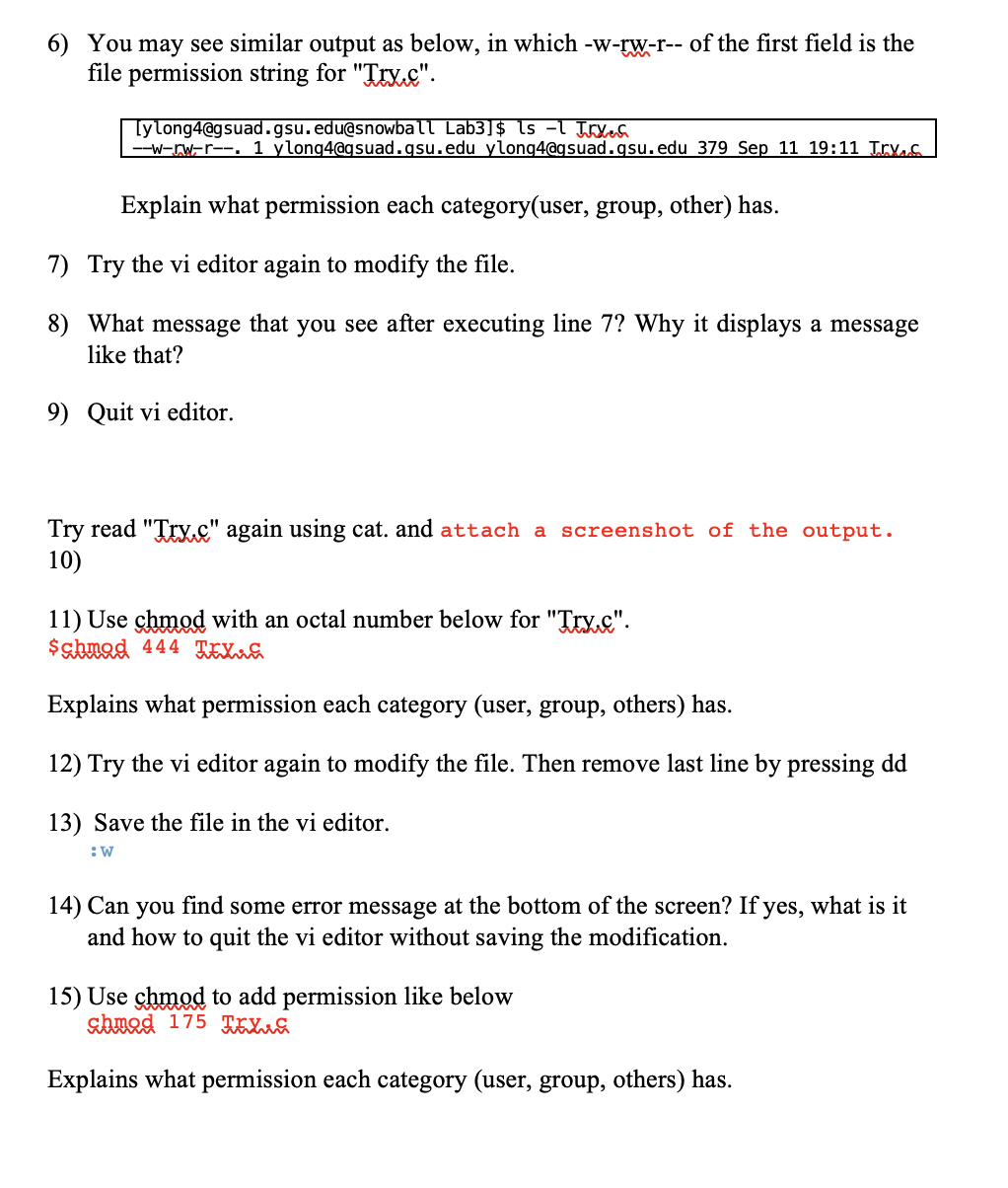


Please Help Me Out This All I Will Give You Helpf Chegg Com
Group members and other users can read and execute, but cannot writeGroup members and other users can read and execute, but cannot writeThe chmod command changes the access permissions of files and folders The chmod command, like other commands, can be executed from the command line or through a script file If you need to list a file's permissions, use the ls command Mykyta Dolmatov / Getty Images



Linux File Permission Explained In Easy Language
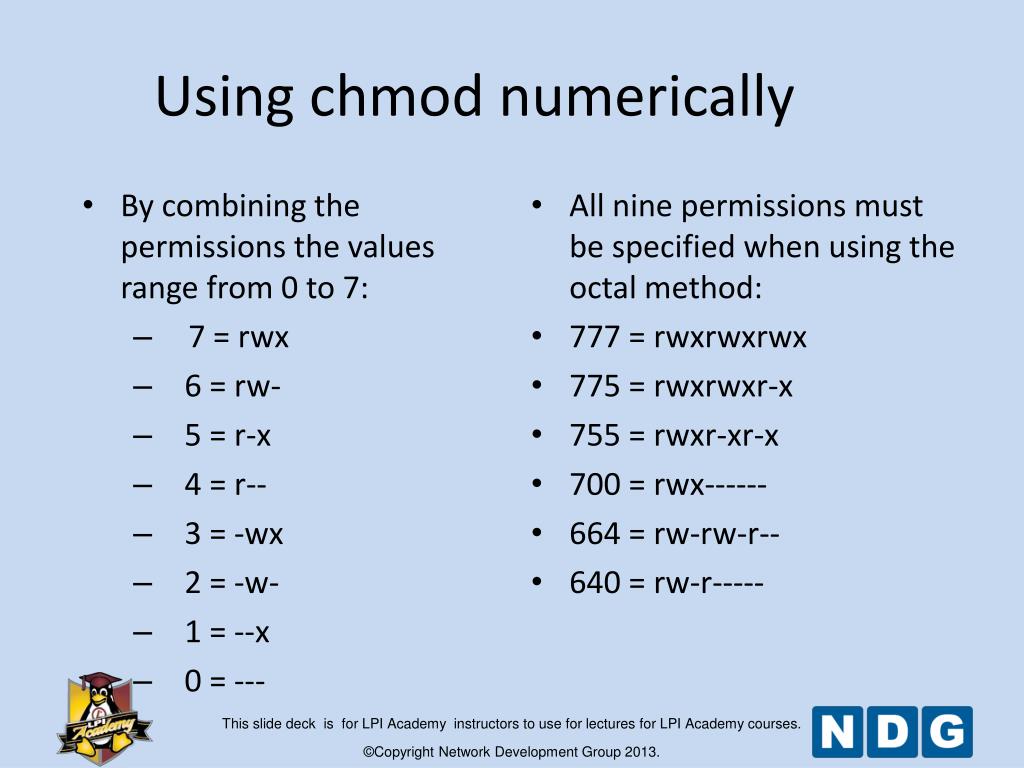


Ppt Module 15 Ownership And Permissions Powerpoint Presentation Free Download Id
Chmod is used to make changes chmod new_permission_set name_of_file_or_directory To meet our goal, we will run chmod 770 /local/projecta Running chmod 770 on projecta gives us the permission set we want rwxrwx How does 770 correspond to rwxrwx?The permissions passed as an argument to chmod are specified as an octal value Each numeral in the value represents three bits If three numerals are given, you're setting the read, write and execute bits for the file's owner, group and others (everyone else)Permissions 400 read by owner 040 read by group 004 read by anybody (other) 0 write by owner 0 write by group 002 write by anybody 100 execute by owner 010 execute by group 001 execute by anybody To get a combination, just add them up



04 Managing File Permission And Ownership Utility Software Operating System Technology



Linux Permissions Chart Yerse
Changing permissions using "chmod" This method can be memorized easily using the following table Each permission (nine total) is given a numeric value as shown in Table A Table A;Give read, write and execute permission to the file's owner, read permissions to the file'sTo change file and directory permissions, use the command chmod (change mode) The owner of a file can change the permissions for user (u), group (g), or others (o) by adding () or subtracting () the read, write, and execute permissions There are two basic ways of using chmod to change file permissions The symbolic method and the absolute form


Assembling Linux Permissions One Block At A Time Mark Fern S Blog



Basic Unix Commands
Absolute(Numeric) Mode In this mode, file permissions are not represented as characters but a threedigit octal number The table below gives numbers for all for permissions typesThe chmod system call cannot change their permissionsView (u)ser, (g)roup and (o)thers permissions for chmod 600 (chmod arwx,ux,grwx,orwx) or use free online chmod calculator to modify permissions easily



12 Services Freenas 11 2 U3 User Guide Table Of Contents



Linux Terminal File Permissions Chmod Chown And Chgrp Linux Line Tools Thing 1
So for example, using the table above, we can see that the file permissions rwxrwxrwx can be represented in octal as 777 Changing File Permissions Chmod The chmod command is used to change the various permission bits of a file or directory The command takes the general formPossible values (to set multiple permissions, add up the following numbers) 1 = execute permissions;Table of Contents By design, Linux is a multiuser operating system In an enterprise system, there would be multiple users accessing the same system You can use chmod command for changing the permissions on a file in Linux Trivia Permissions used to be called mode of access and hence chmod was the short form of change the mode of access



Vc8tbwgpngtuim
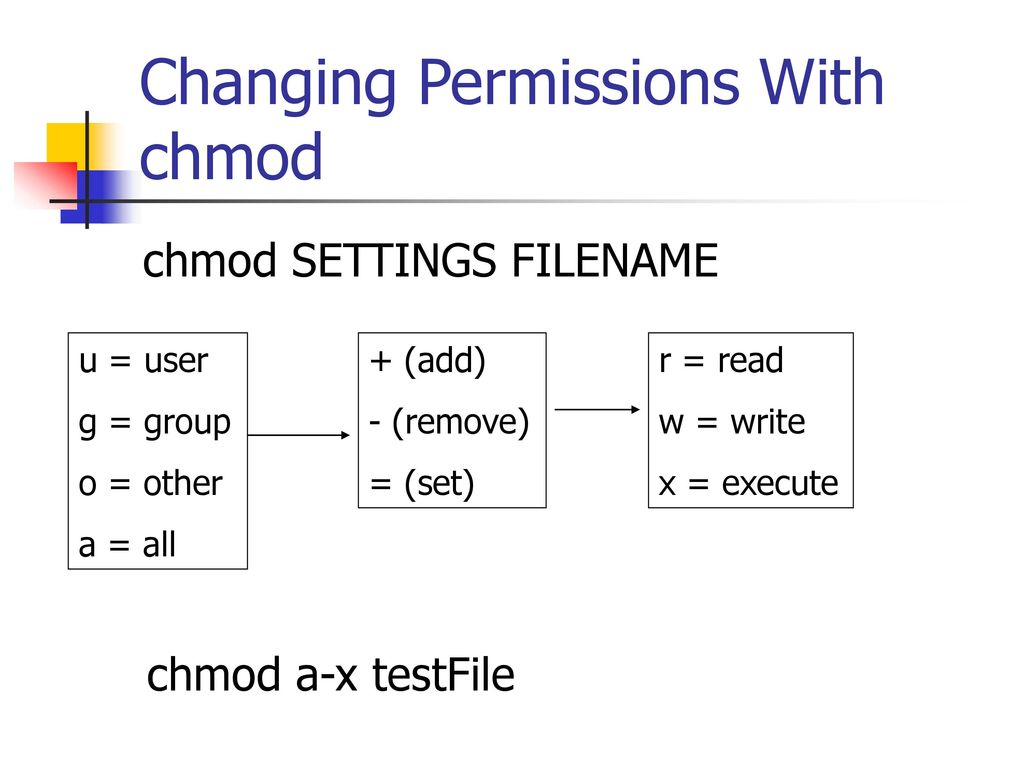


Introduction To Unix Cs Ppt Download
To list file permissions in a folder with human readable file size ls lh /var Output total 52K drwxrxrx 2 root root 40K Apr 9 0852 backups drwxrxrx 11 root root 40K Jan 29 18 cache drwxrwxrwt 2 root root 40K Apr 27 19 crashSudo chmod XXX R directorylocation You can also simply navigate to the folder (Using cd command) where you want to apply the permissions to all of the folder contents and run the following command chmod R XXX I hope this article has helped you in applying the chmod command to a folder and all of its contentsPermission bits Select the permissions you require below The tool will provide you with an octal code that corresponds to these permissions which can then be applied to relevant directories and files with chmod Special setuidWhat is setuid?



Pdf Mastering Unix Shell Scripting Bash Bourne And Korn Shell Scripting For Programmers System Administrators And Unix Gurus Semantic Scholar
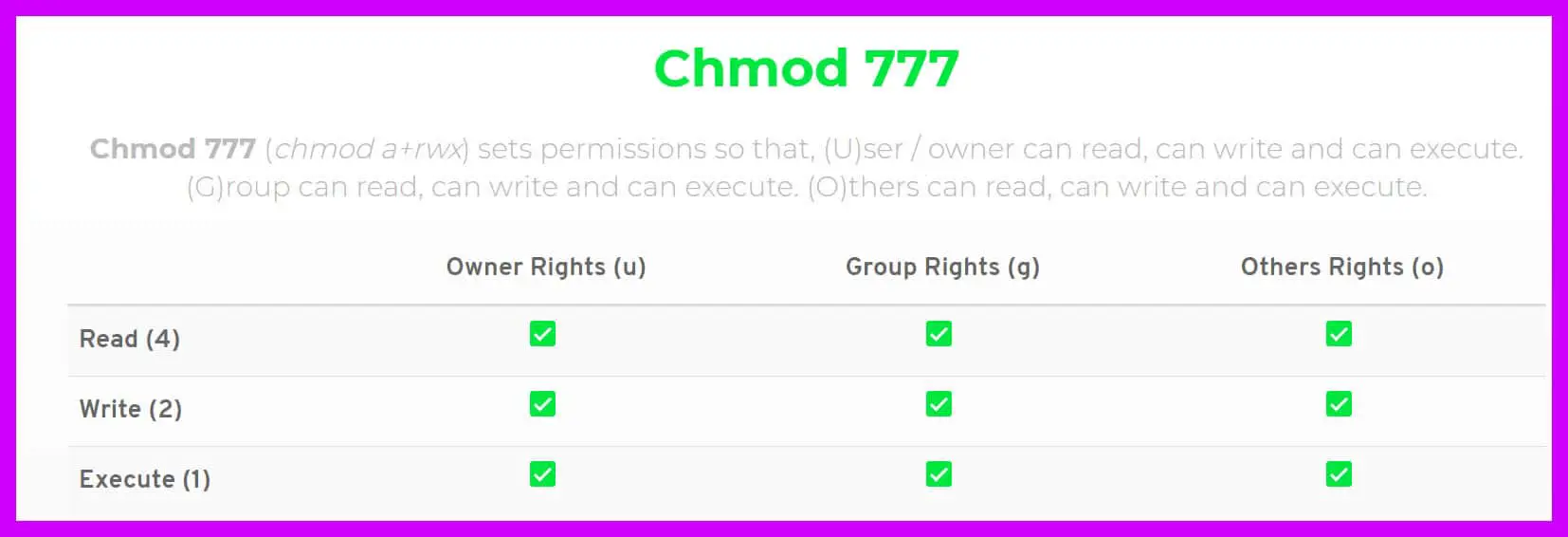


Chmod 777 A Definitive Guide To File Permissions
Linux Chmod Permissions Cheat Sheet Set the permissions for a file or directory by using the chmod command Each row has 2 examples, one for setting that permission for a file, and one for a directory named 'dir' This works in any linux distro, such as Ubuntu, etc Anybody can read, write, executeSpecifies the new permissions The mode parameter consists of four numbers The first number is always zero The second number specifies permissions for the owner The third number specifies permissions for the owner's user group The fourth number specifies permissions for everybody elseChanging permissions via SSH If you're logged into your server via SSH, you can change permissions by running the chmod command There are two ways to set permissions using chmod Numeric Mode Named Mode Numeric Mode is easier to understand as you just need to add up the values



Ubuntu 10 04 Overview Ubuntu Intro Backdoor Virus Malware Firewall User And Group Security Local Security Policy Slideshow And Powerpoint Viewer Ubuntu Intro Why Learn Linux U
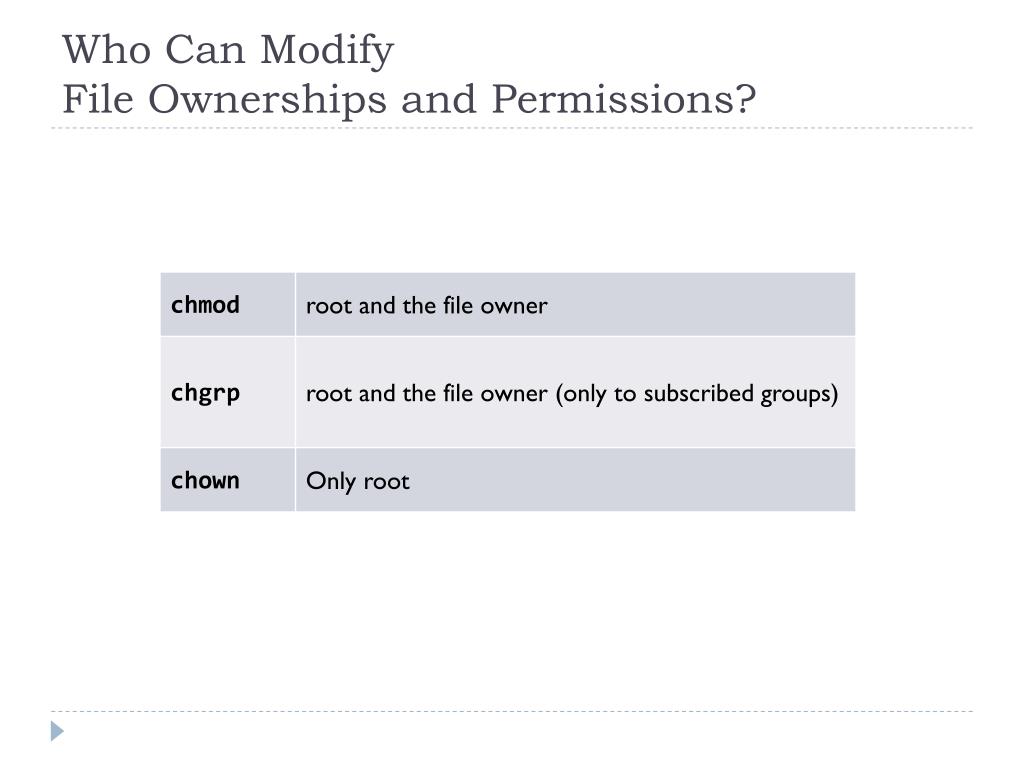


Ppt Permissions Powerpoint Presentation Free Download Id
Each of the three digits in our chmod statement — 7, 7, 0 — corresponds to Owner, Group, and Others rightsExamples chmod 644 filehtm Set the permissions of filehtm to "owner can read and write;Linux Chmod Permissions Cheat Sheet Set the permissions for a file or directory by using the chmod command Each row has 2 examples, one for setting that permission for a file, and one for a directory named 'dir' This works in any linux distro, such as Ubuntu, etc Anybody can read, write, execute
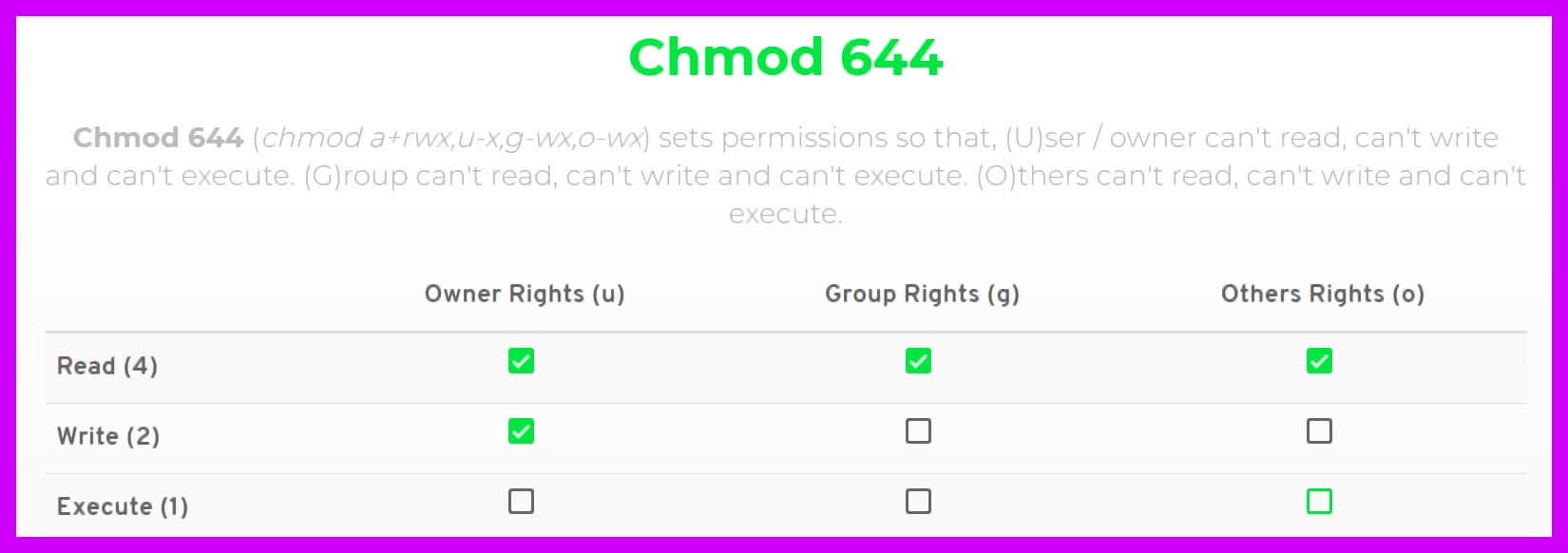


Chmod 777 A Definitive Guide To File Permissions



Linux Commands Cheat Sheet Definitive List With Examples
View (u)ser, (g)roup and (o)thers permissions for chmod 600 (chmod arwx,ux,grwx,orwx) or use free online chmod calculator to modify permissions easilyThe chmod command A normal consequence of applying strict file permissions, and sometimes a nuisance, is that access rights will need to be changed for all kinds of reasons We use the chmod command to do this, and eventually to chmod has become an almost acceptable English verb, meaning the changing of the access mode of a fileIn Linux, you will often need to make use of the chmod command Chmod stands for "Change Mode" and is used to modify the permissions of files and directories in a Linux based system By using this command, we can set the read, write, and execute permissions for all three of the permission groups (Owner, Group and Other) in Linux The command is relatively simple to use and involves using



Slides Show



30 Linux Permissions Exercises For Sysadmins Devconnected
For instance to change permissions of the owner of a file to read and write, execute chmod urw file1txt To give write permissions to everyone, execute chmod aw file1txt To remove the write permission for all other users, we run chmod ow file1txt To change the permissions of a directory, we run chmod permission directory nameTo change the permissions of a file, one uses the chmod command, with the following syntax chmod references operator modes filename The references are shorthand (u, g, or o) for each class The operator determines whether to add (), remove () or explicitly set (=) the particular permissionsThe chmod command A normal consequence of applying strict file permissions, and sometimes a nuisance, is that access rights will need to be changed for all kinds of reasons We use the chmod command to do this, and eventually to chmod has become an almost acceptable English verb, meaning the changing of the access mode of a file



Cisco Networking Academy



Lab 03 File Permissions Cs210 Introduction To Unix Documentation
Active 3 years, 6 months ago Viewed 4k times 1 I'm new to SAS I'm wondering if there is a way to ensure all the dataset my SAS program creates have read/write permissions for everyone Thanks for your help permissions sas dataset Share asked Apr 10 '17 at 1525CHMOD Permissions Reference Chart by David · September 18, 12 This is how I remember permissions and most likely, it will help you remember it as well User Group Other Read 4 4 4 Write 2 2 2 Execute 1 1 1 U G O X X X Chmods 777 = rwxrwxrwx 755 = rwxrxrx 644 = rwrr 700 = rwx 750 = rwxrxIn this quick tutorial, we will see how we can use chmod command in an Ubuntu machine to find, modify and remove user permissions from specific files which exist on the user's file system Let's play through various conditions so that we can master basic chmod commands which can make our everyday life easier with Ubuntu Linux Permissions Linux Permissions are a great set of rules which



Unix Permissions The Easy Way Index Of All Chmod Permutations By Semi Koen Towards Data Science



File System Details
Group can read only;4 = read permissionsChmod Modifies File Permissions In Linux, who can do what to a file or directory is controlled through sets of permissions There are three sets of permissions One set for the owner of the file, another set for the members of the file's group, and a final set for everyone else The permissions control the actions that can be performed on the file or directory



Linux File Permissions Explained Page 1 Line 17qq Com


Serg Iakovlev
The permissions passed as an argument to chmod are specified as an octal value Each numeral in the value represents three bits If three numerals are given, you're setting the read, write and execute bits for the file's owner, group and others (everyone else)Active 3 years, 6 months ago Viewed 4k times 1 I'm new to SAS I'm wondering if there is a way to ensure all the dataset my SAS program creates have read/write permissions for everyone Thanks for your help permissions sas dataset Share asked Apr 10 '17 at 1525The chmod command changes the access permissions of files and folders The chmod command, like other commands, can be executed from the command line or through a script file If you need to list a file's permissions, use the ls command Mykyta Dolmatov / Getty Images Command Syntax



Security Pierre Villard



Answer The Following Questions Related To Permissi Chegg Com
In Unix and Unixlike operating systems, chmod is the command and system call which is used to change the access permissions of file system objects It is also used to change special mode flags The request is filtered by the umask The name is an abbreviation of change mode Modes are the filesystem permissions given to "user", "group" and "others" classes to access files under Unix They are shown when listing files in long format, or, if accesscontrol lists are in use, using getfacl Modes cSo for example, using the table above, we can see that the file permissions rwxrwxrwx can be represented in octal as 777 Changing File Permissions Chmod The chmod command is used to change the various permission bits of a file or directory The command takes the general form3 chmod x Permission to execution File/Directory Here comes the riskiest chmod command for Linux If you are a newbie on the Linux system, I would not recommend using the chmod x command on your system Basically, the chmodx command is used to execute the file or to kill the process
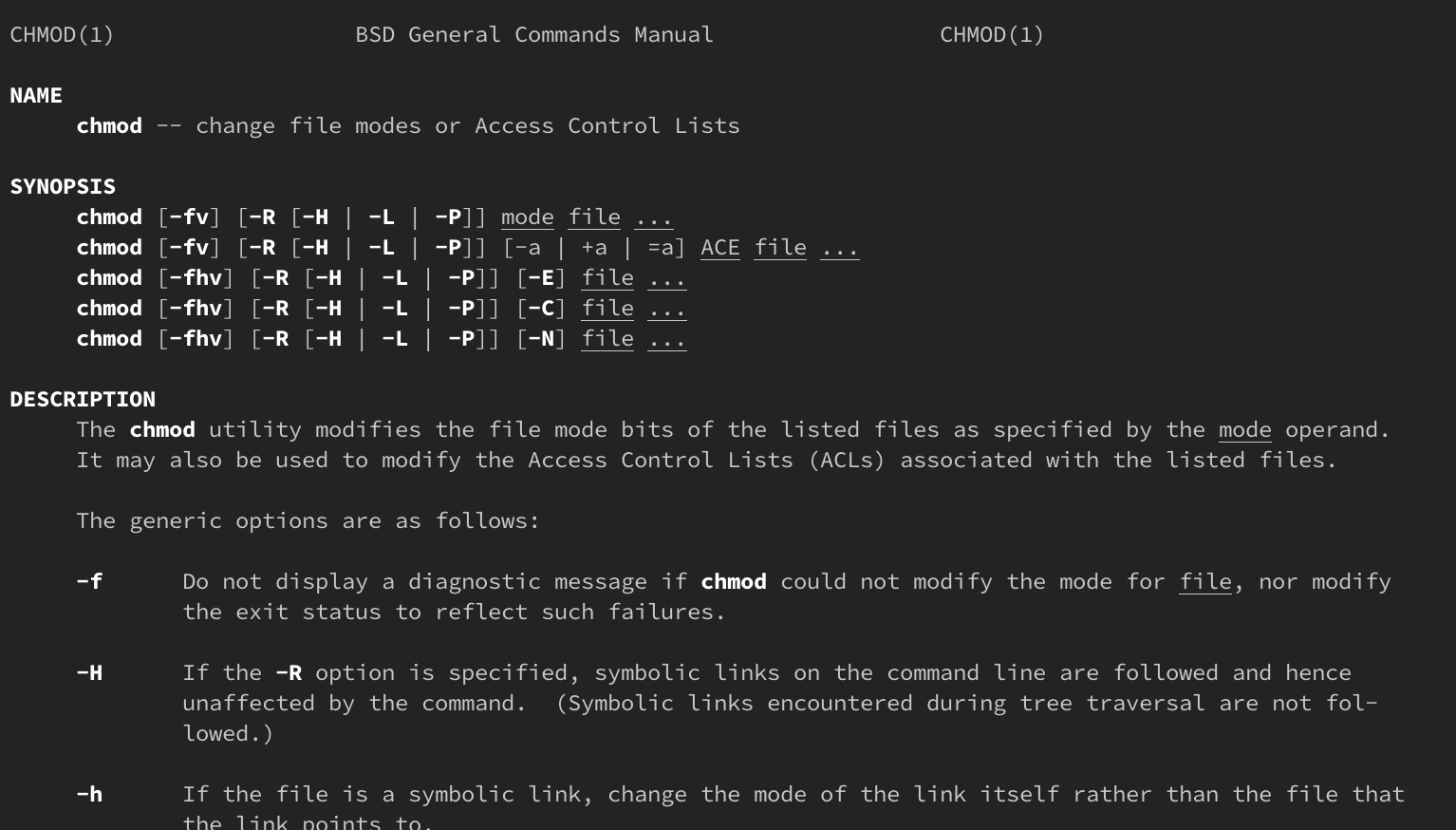


How Do Linux Permissions Work



Suse Linux Toolbox 1000 Commands For Opensuse And Suse Linux Enterprise Semantic Scholar
Changing permissions using "chmod" This method can be memorized easily using the following table Each permission (nine total) is given a numeric value as shown in Table A Table A;2 = write permissions;Using chmod with Absolute Permissions The second way to modify permissions with the chmod command is to use a number to specify each set of permissions for the file Each permission is assigned a value, as the following table shows, and the total of each set of permissions provides a number for that set
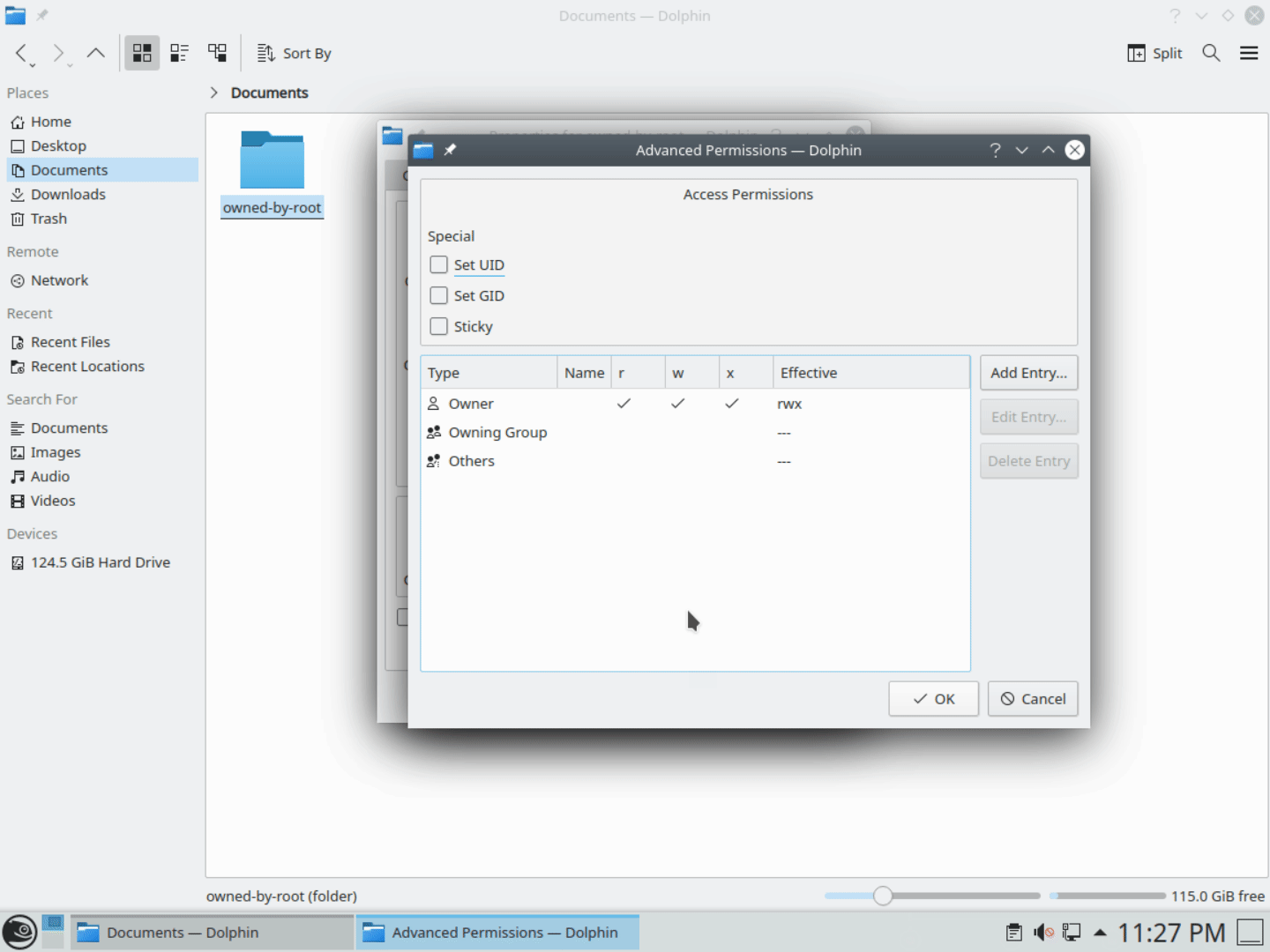


A Windows Guy In A Linux World Users And File Permission
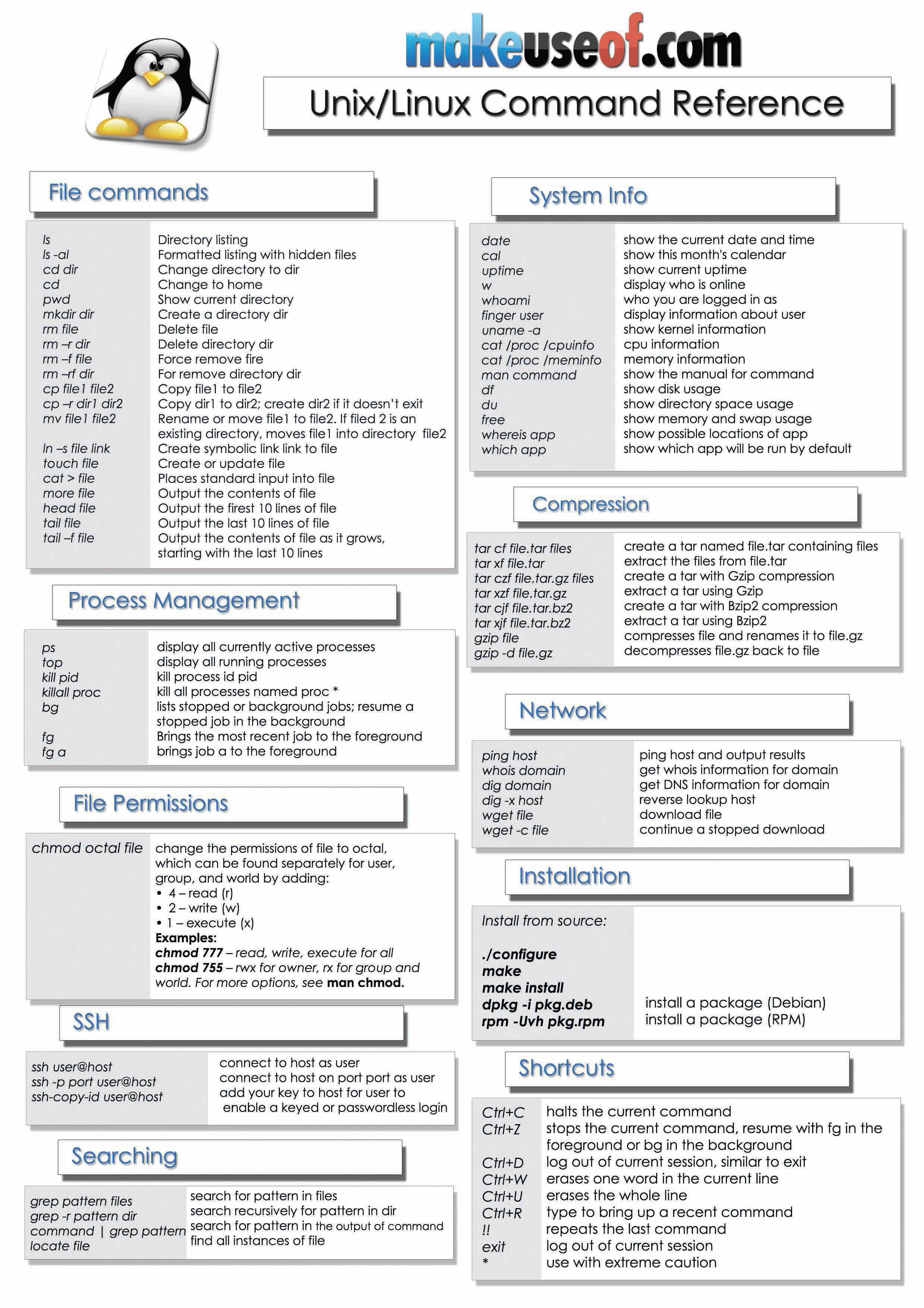


Ten Of The Best Cheat Sheets For First Time Linux Admins
Sudo chmod XXX R directorylocation You can also simply navigate to the folder (Using cd command) where you want to apply the permissions to all of the folder contents and run the following command chmod R XXX I hope this article has helped you in applying the chmod command to a folder and all of its contentsUnix chmod permissions tableChmod 2xxx file (xxx refers to regular read, write, and execute permissions) chmod ot file or chmod 1xxx file (xxx refers to regular read, write, and execute permissions) Note Sticky bit permissions are almost always set to the octal value of 1777 Remove chmod us file or chmod 0xxx file chmod gs file or chmod 0xxx
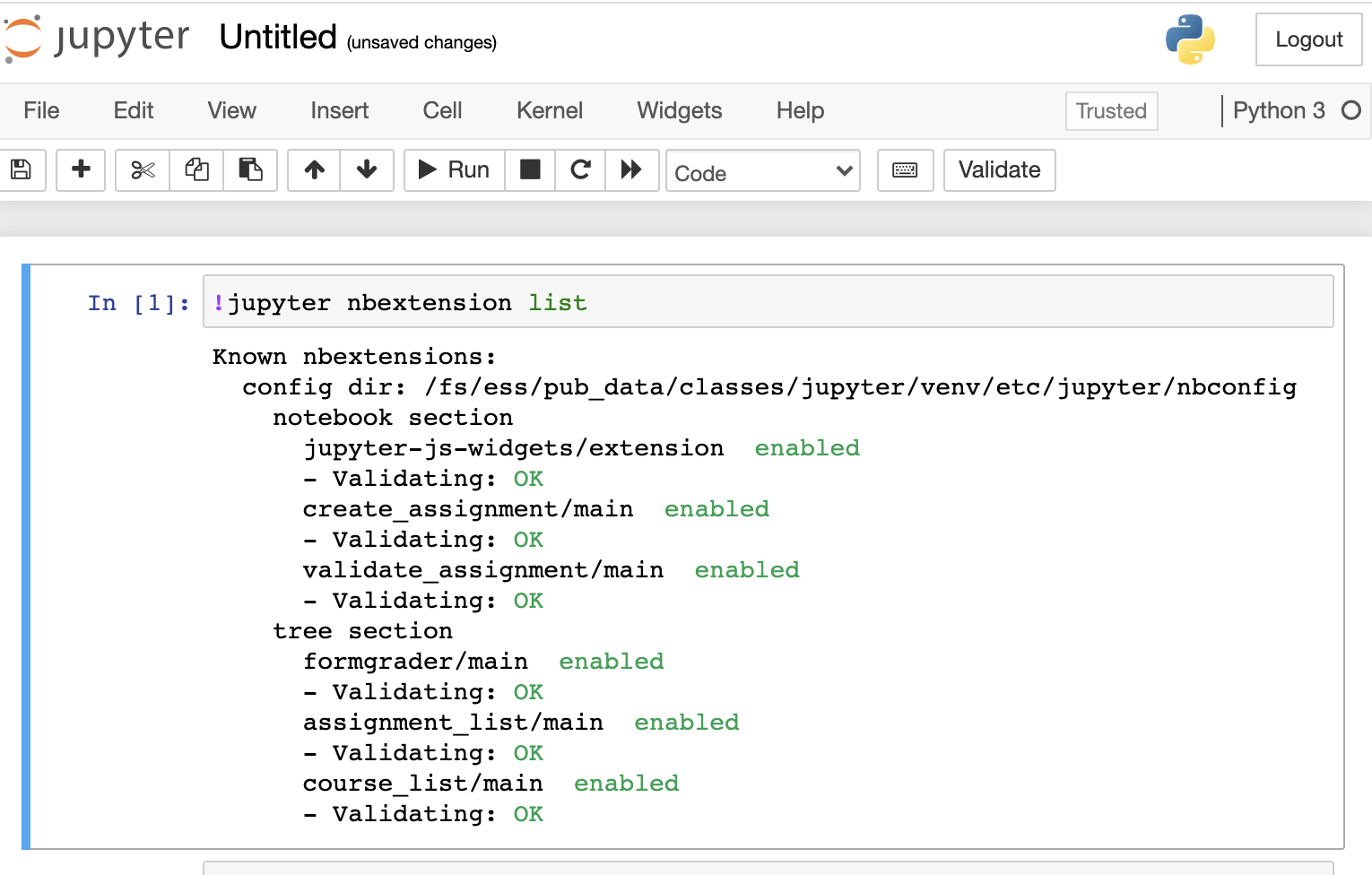


Client Resources



D 6 Permission Issues And How To Troubleshoot Engineering Libretexts


Assembling Linux Permissions One Block At A Time Mark Fern S Blog
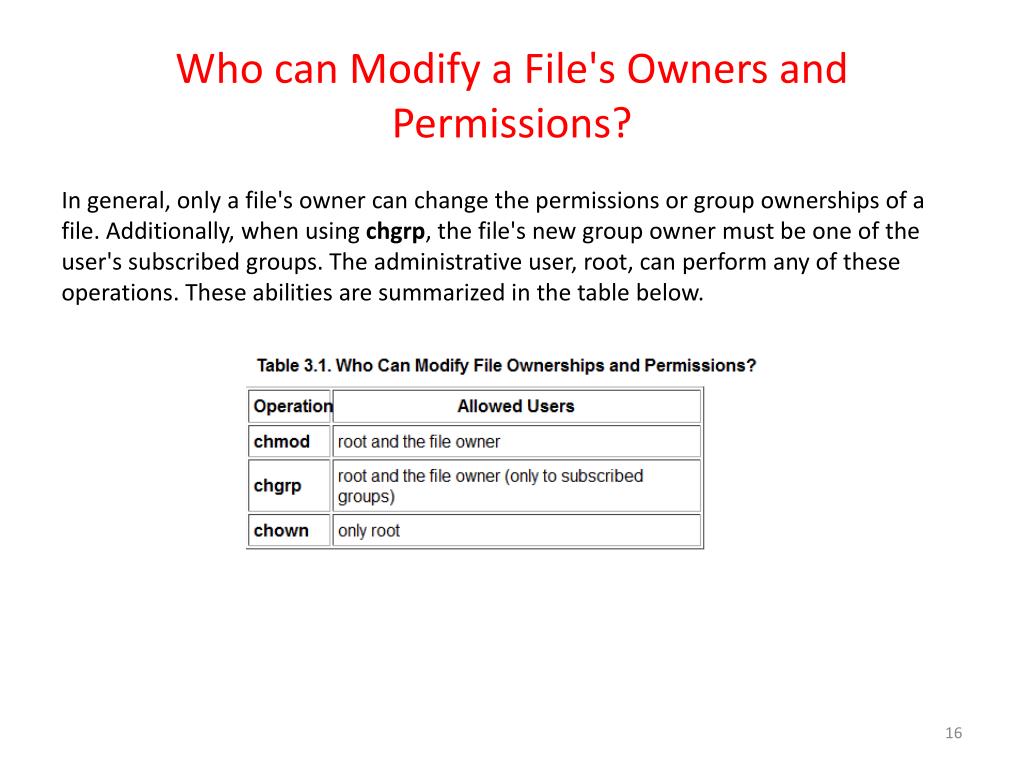


Ppt Workbook 4 File Ownerships And Permissions Powerpoint Presentation Id



Unix Permissions The Easy Way Index Of All Chmod Permutations By Semi Koen Towards Data Science



Unix File Permissions What Is Chmod Command In Unix
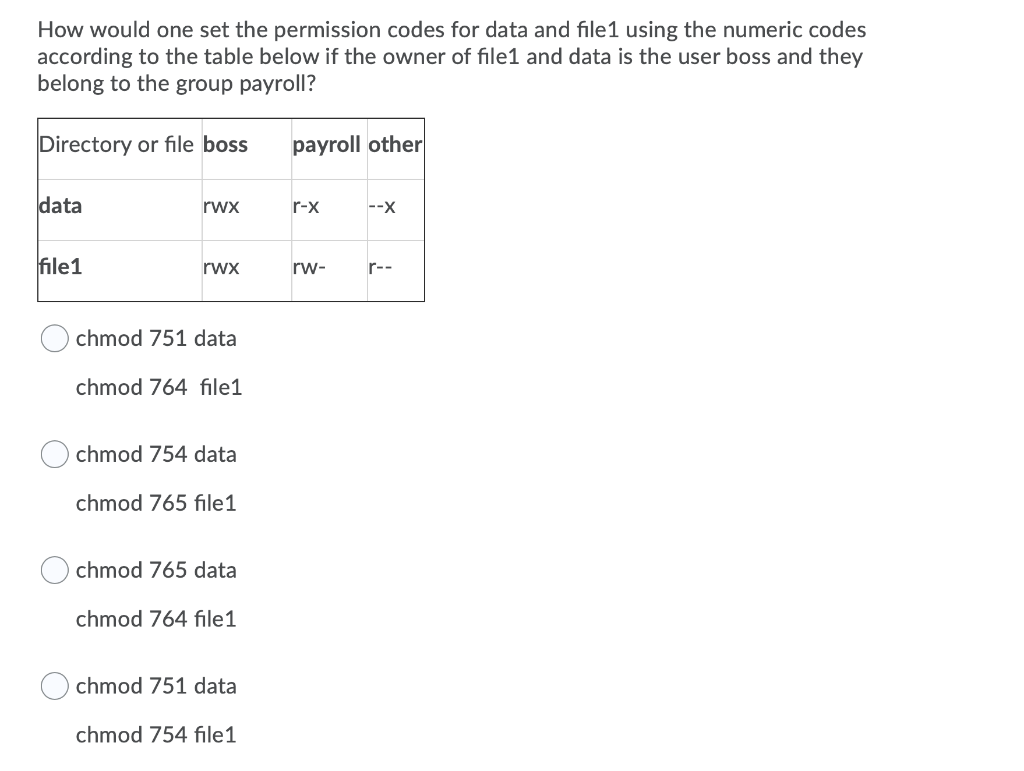


Solved How Would One Set The Permission Codes For Data An Chegg Com



Apply Chmod To A Folder Its Contents Sub Directories Wtmatter



Change Permissions Linux Changing Permissions In Linux System Dev Community



Managing Permissions Opennebula 5 12 8 Documentation
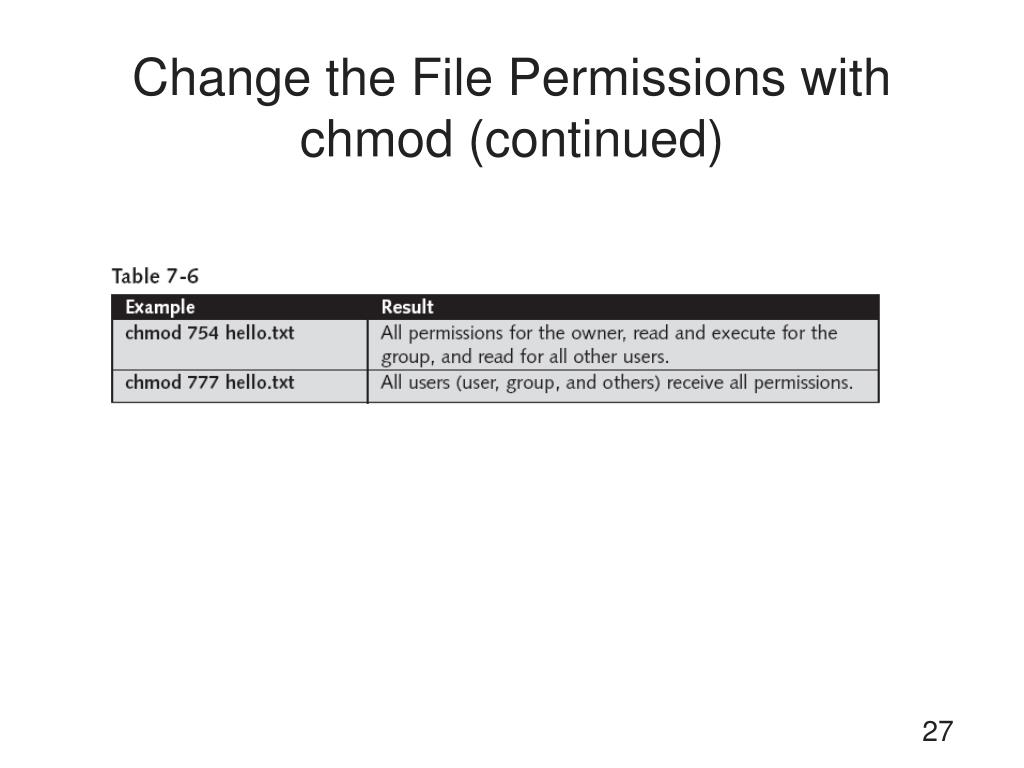


Ppt Linux Use The Command Line Interface To Administer The System Powerpoint Presentation Id



Solved Ambari Change Permission Of Mr History Folder Whi Cloudera Community



The Linux Command Line Cheat Sheet Network World



Chmod Code Example



Linux File Permissions Train With Ctg



7 Users And Permissions



The University Of Akron College Of Applied Science Technology Dept Ppt Download



Access Control



Linux File Permissions Programmer Sought



Permissions And Ownership Chown Chmod On Redhat Linux Using Vmware Workstation Vmware Workstation Linux Youtube
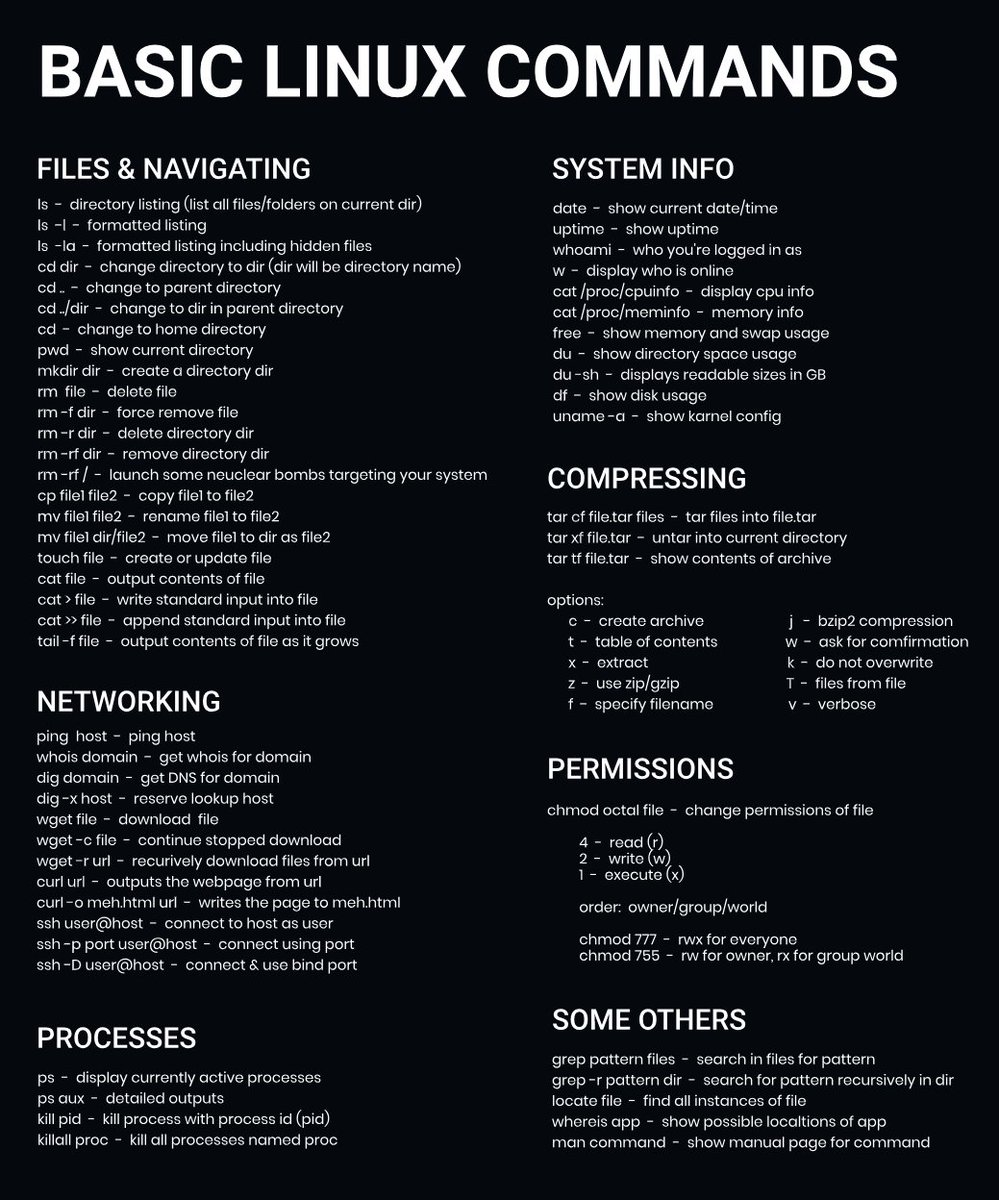


The Best Linux Blog In The Unixverse Basic Linux Commands Very Useful For New Linux Users Opensource



Midterm 1



Chmod Octal Chart Zerse



Linux Chmod File Permissions Decoded From The 1980s Rickyadams Com



File Permission Meanings Stack Overflow
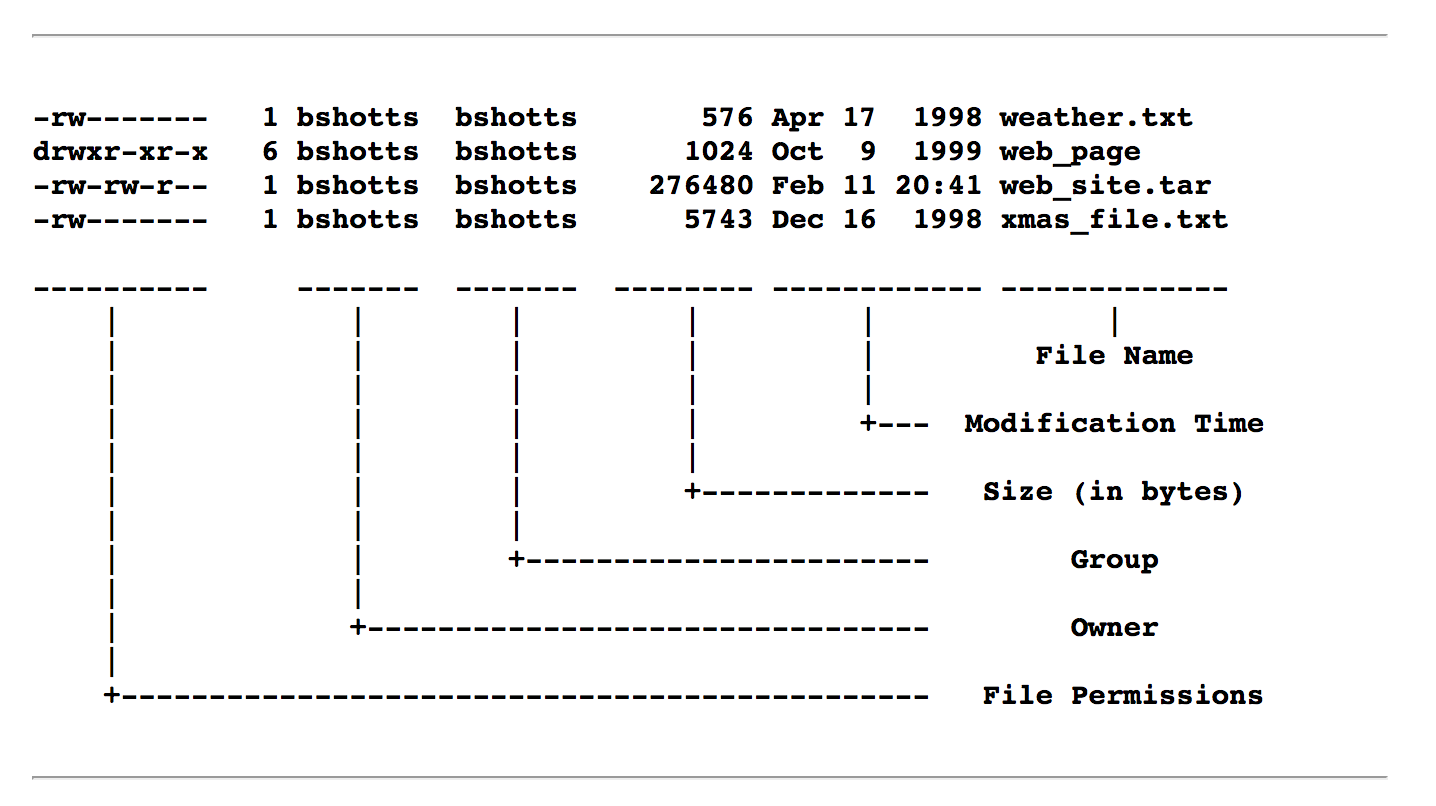


File Permissions In Linux Unix Vk9 Security


I Made This Chmod Cheat Sheet And Thought It Might Be Useful Linux4noobs
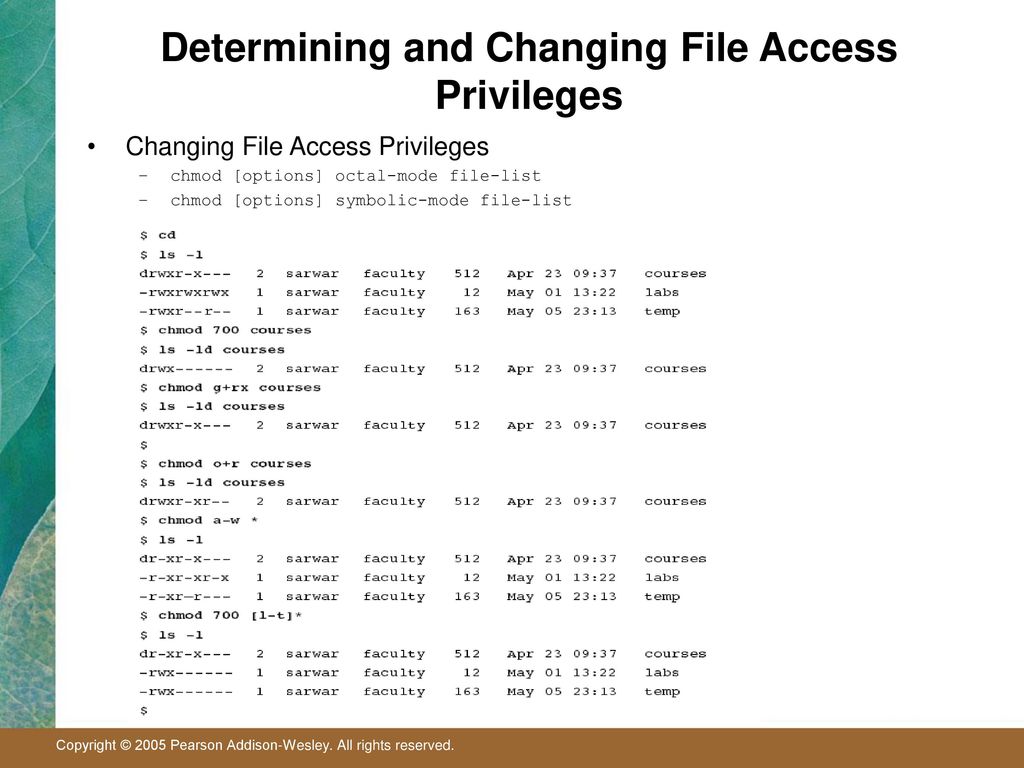


Chapter 8 File Security Ppt Download
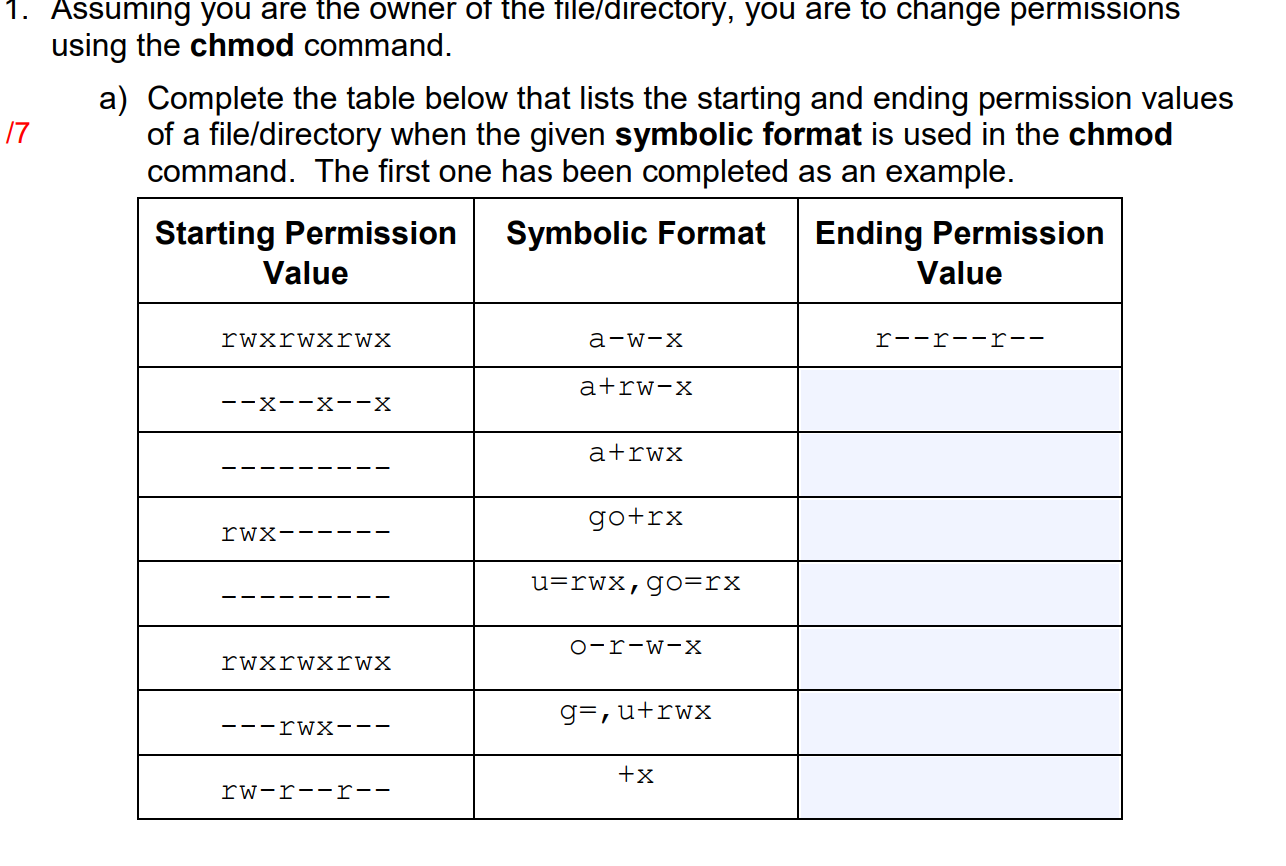


Solved 1 Assuming You Are The Owner Of The File Director Chegg Com
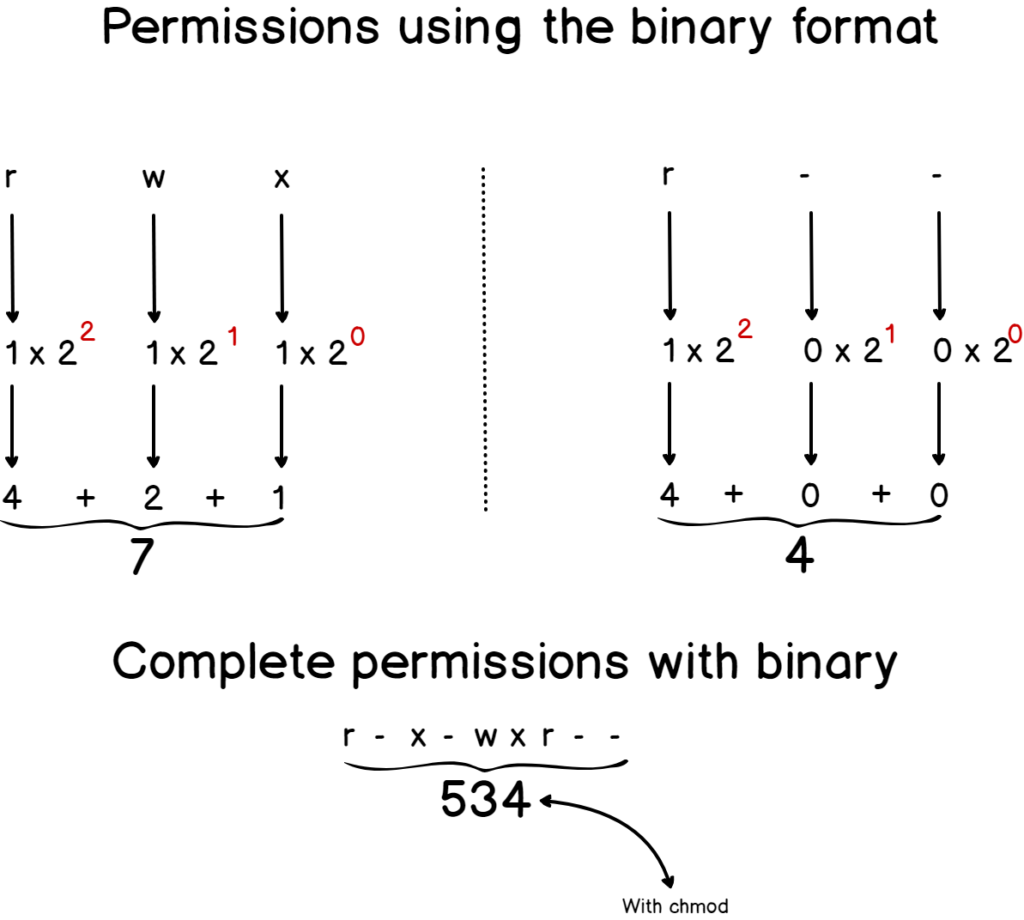


Linux File Permissions Complete Guide Devconnected



Applying Ownership And Permissions In Linux Dev Community


Very Capable Fine Tuning Security With File Posix Capabilities Linux Magazine



File Permission Meanings Stack Overflow



How To Use Chmod Command In Linux Explained With Examples
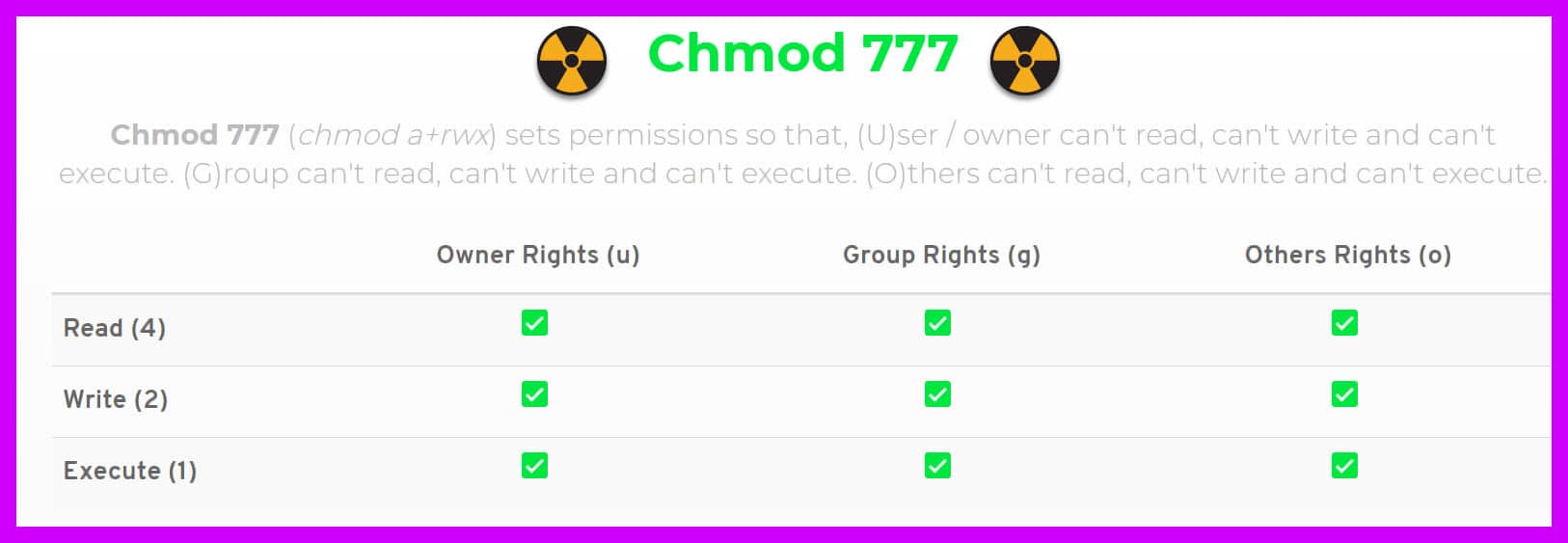


Chmod 777 A Definitive Guide To File Permissions



Cit 480 Securing Computer Systems Ppt Download


Linux User Group And File Permission Introduction



Cross Protocol Permissions Xpp Qumulo Care


I Made This Chmod Cheat Sheet And Thought It Might Be Useful Linux4noobs



Chapter 10 Managing File Permissions Red Hat Enterprise Linux 8 Red Hat Customer Portal



How To Check File Permissions In Linux Os



Basic Linux Commands



Shell Tutorial Part 9 Changing Permissions Youtube



Cross Protocol Permissions Xpp In Common Scenarios Qumulo Care
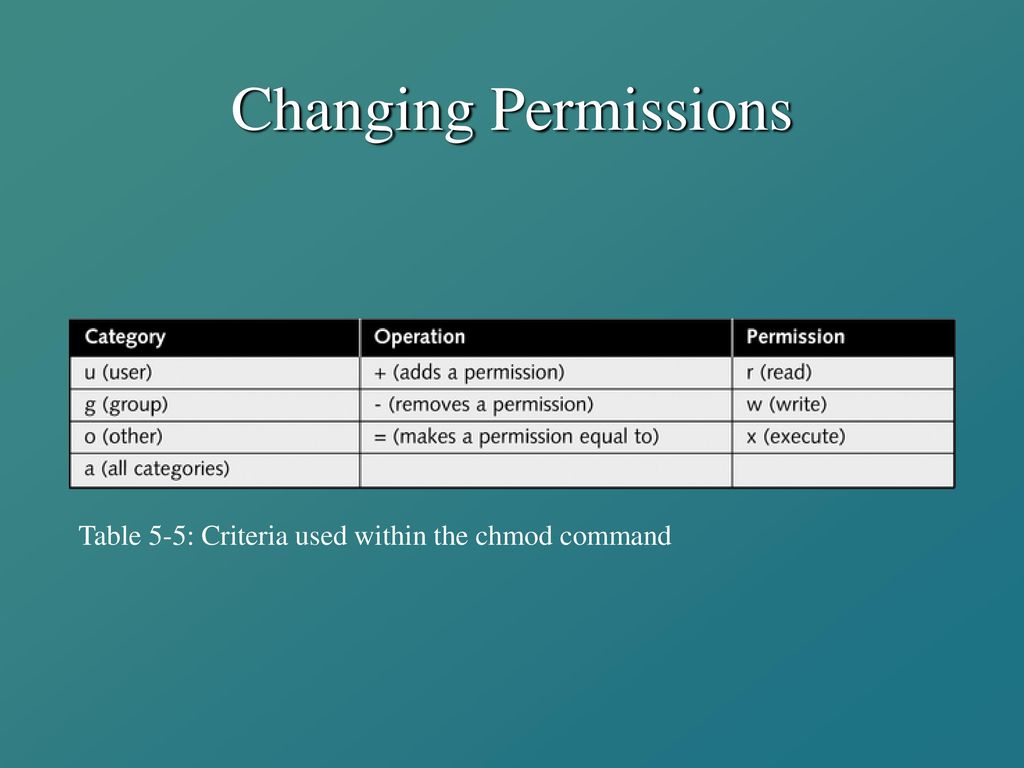


Linux Filesystem Management Ppt Video Online Download



Linux File Permissions Management System Programmer Sought



Linux Permissions Chart Page 1 Line 17qq Com


Removed Everyone Permissions Accidentally Apple Community



Linux File Permissions Complete Guide Devconnected



How To Fix Ftp Permission Errors On Google Cloud One Page Zen



Linux File Permissions Train With Ctg



0 件のコメント:
コメントを投稿